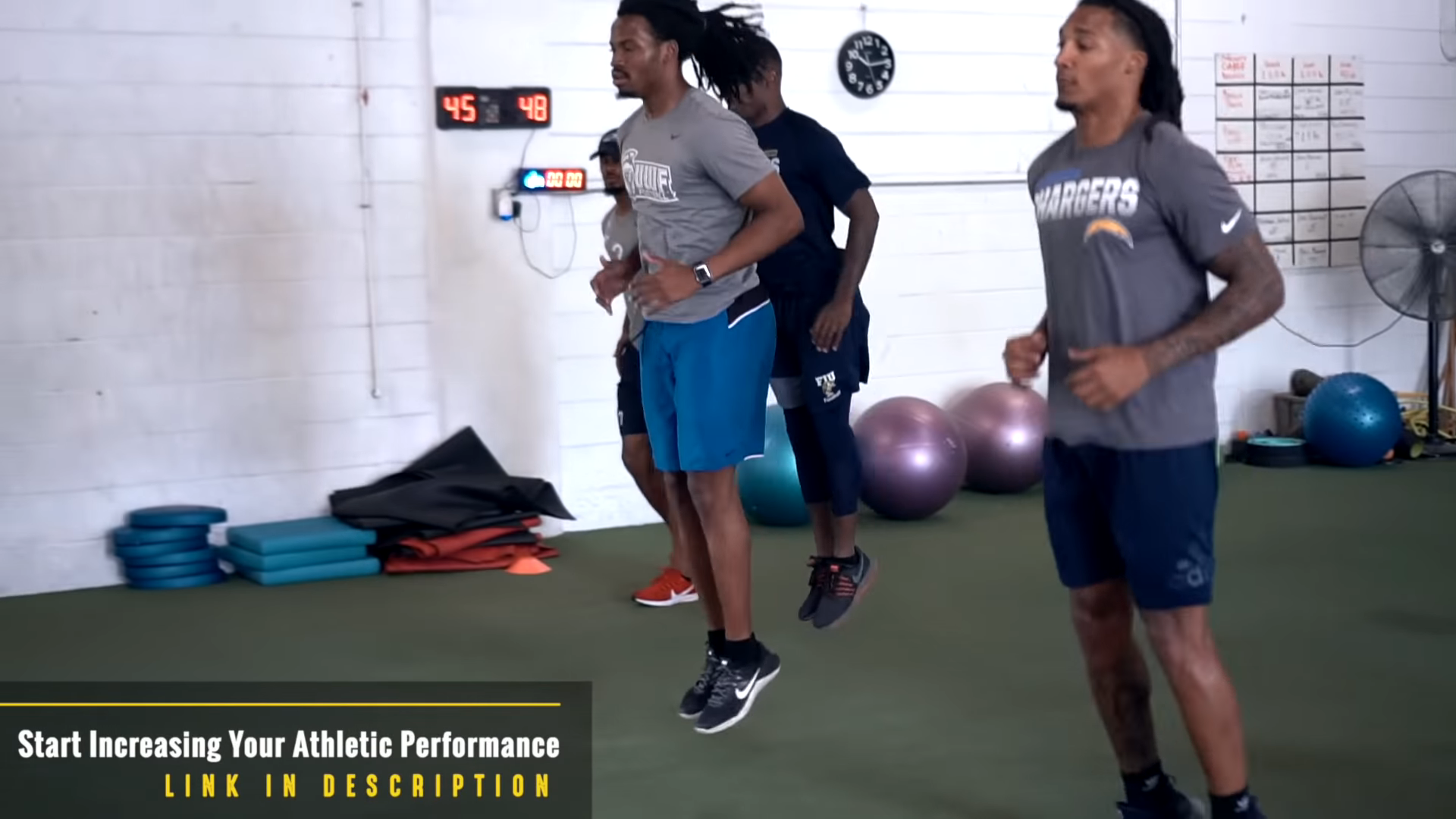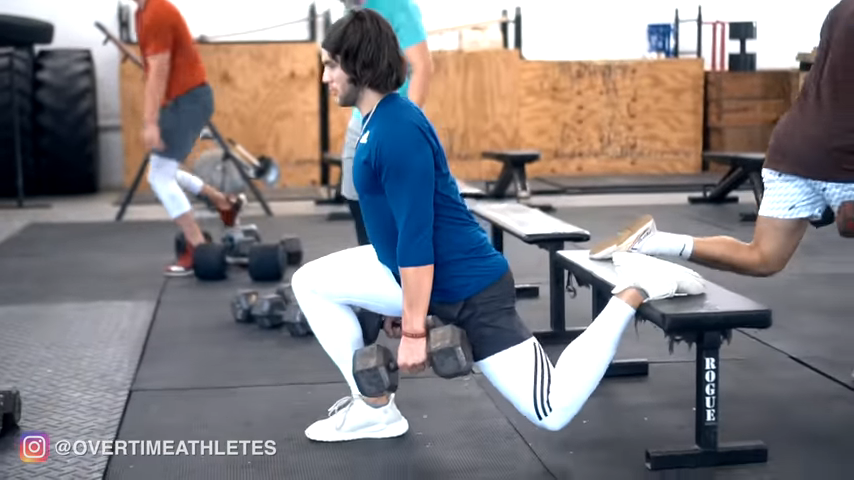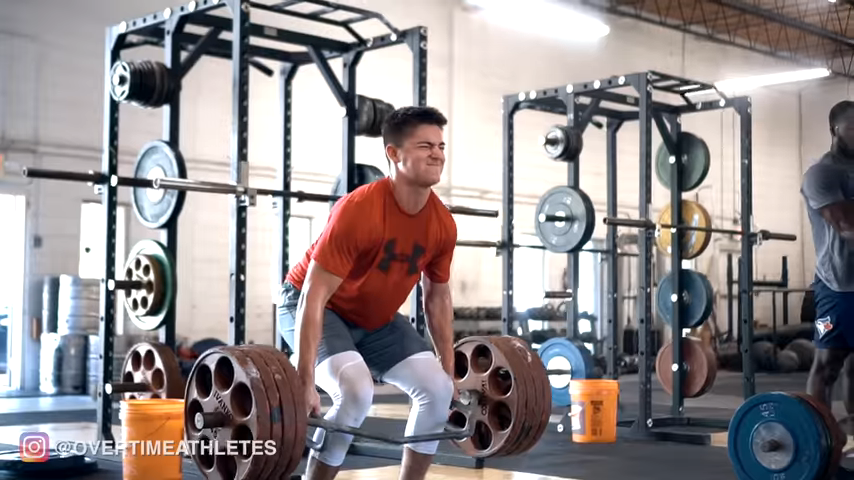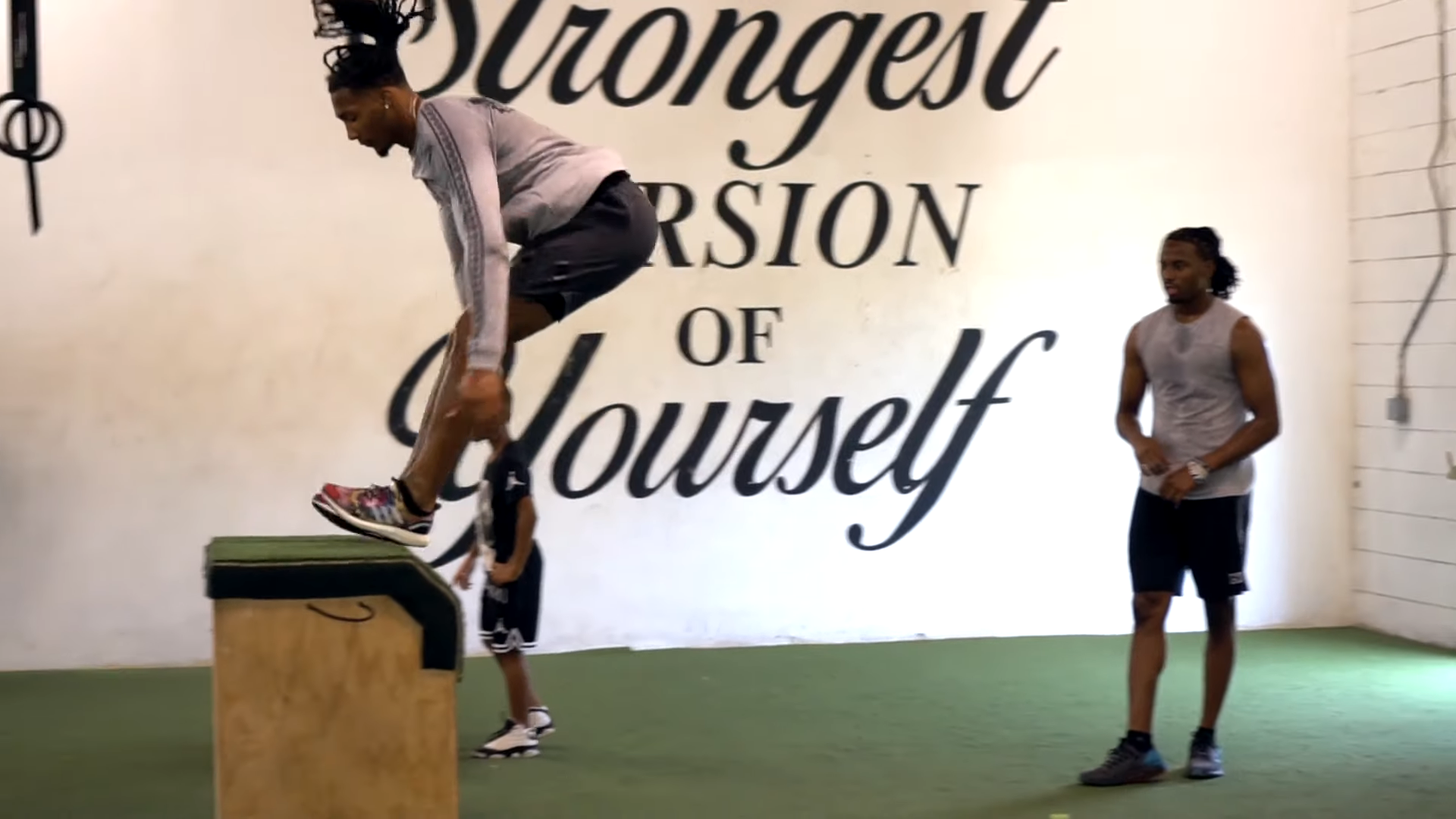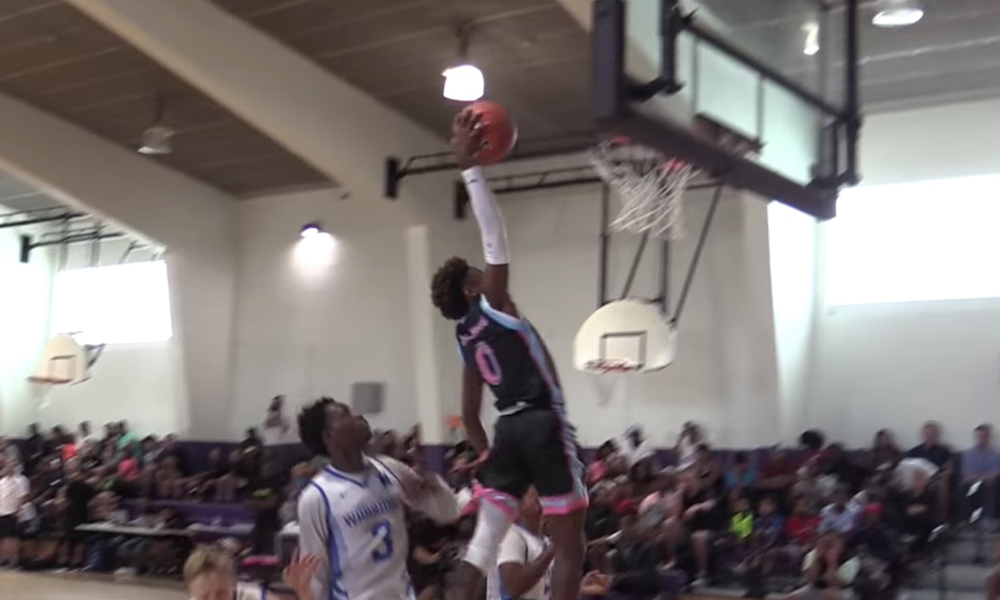5 Vertical Jump Training Mistakes That RUIN Your Vertical
My road to a 44-inch standing vertical jump wasn’t easy. For a while I was spinning my wheels.
I plateaued…
I hit a wall…
Didn’t receive the jump gains that I expected.
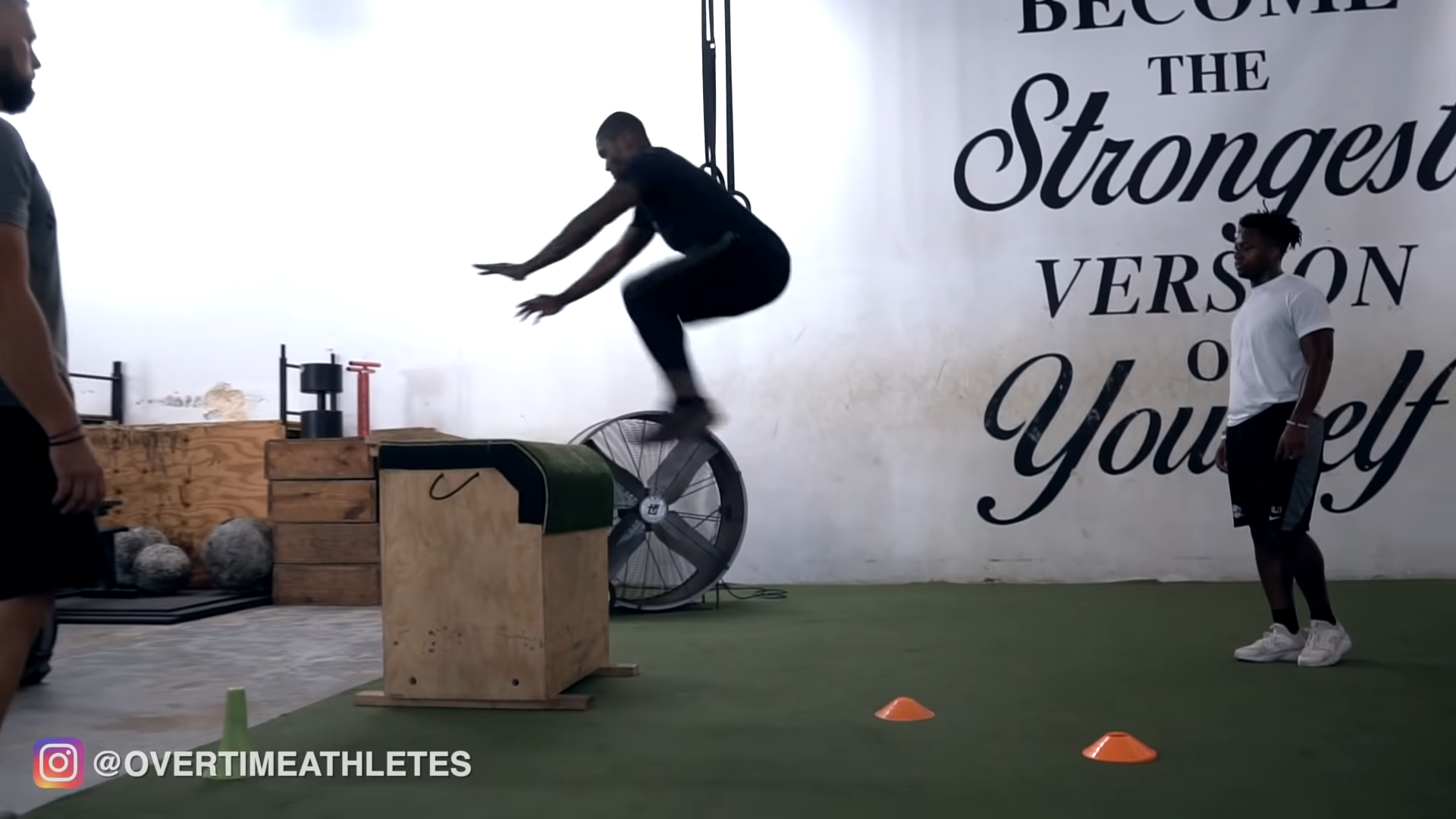
And part of the reason, among many, was that I was making 5 vertical jump training mistakes. Vertical jump training mistakes that are MAJOR no-nos. And they’re the same mistakes I see other guys making today.
Lucky for you, I want to share a few of those mistakes today, and hopefully, accelerate your vertical progress, and ramp up the amount of gains you receive from your vertical jump training.

I wasn’t guilty of ALL of these mistakes.
Some are just mistakes I see other guys making.
But, either way, they’ll help you identify some mistakes in your training:
Vertical Jump Training Mistake #1: Overlooking Certain Muscles
You might know that I emphasize the hip, knee, and ankle throughout all phases of my jump training. I do this with various foundational plyometrics that I use throughout the entirety of my athletes’ programming.
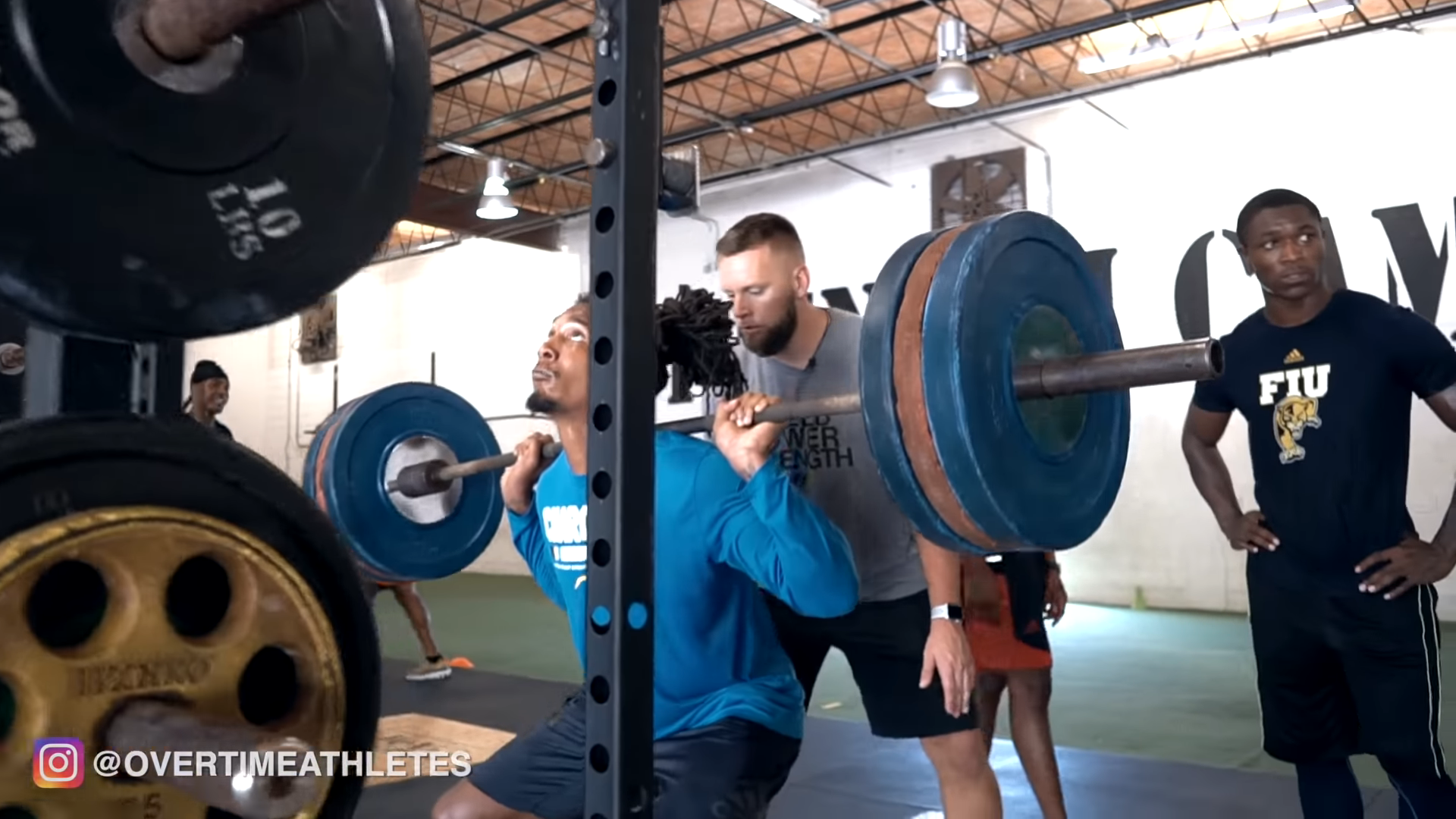
But, most guys only emphasize one or two of these joints through faulty programming…
Or…
Faulty movement patterns.
See, some athletes have quad-focused squat patterns where their knees go way over their toes when they squat. They do the same thing in their Bulgarian Split Squats, trap bar deadlift, and even their jumping.
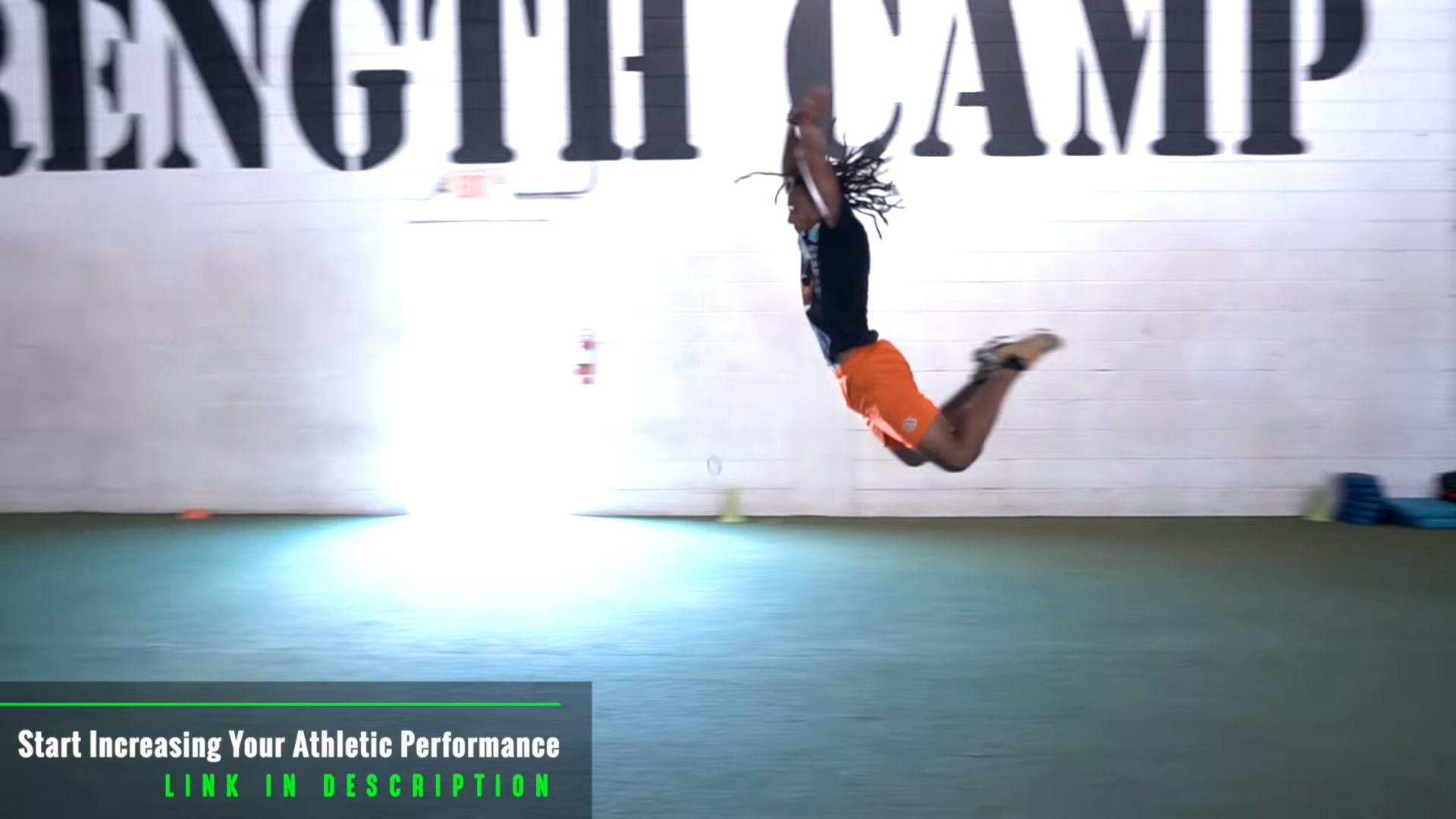
Moving like this places too much emphasis on the knee, and results in underdeveloped glutes. The glutes are a MAJOR player in the vertical jump, and if you can build them up, it’ll definitely result in added inches on your vertical jump.
Vertical Jump Training Mistake #2: Squatting too deep
It’s good to build strength through an extended range of motion… But just like anything, there’s such a thing as too much.

And I see this issue with guys who have made it their goal to increase their vertical jump…
See, it’s good to build foundational strength through an extended range of motion by squatting to parallel. But, once you’ve built that foundation, you can get a little more sport-specific, or in this case, goal specific.
By this, I mean squatting to slightly below quarter squat position.
Think about it. In a game situation, or even in a jump, when do you ever find yourself in a parallel squat position. I can’t think of a single situation. Can you?
So, it’d make sense to make the squat specific to your vertical jump goal. That means squatting to slightly below quarter squat position.
And this not only carries over to your vertical jump…
But also your sprinting and overall explosiveness as well.
Vertical Jump Training Mistake #3: Ignoring Imbalances
Depending on how bad your imbalances are, you could add up to 3 inches from simply stretching and mobilizing.
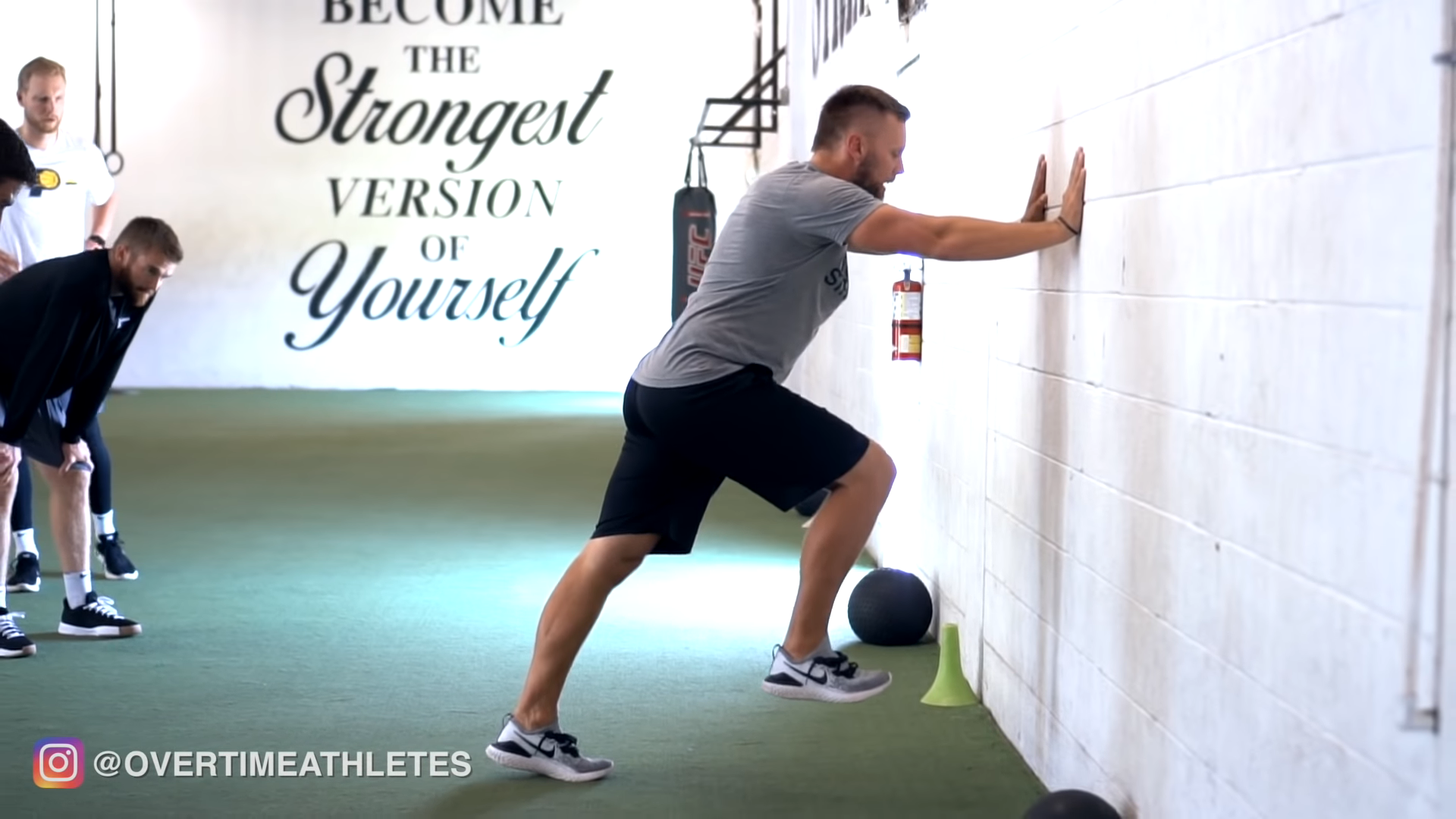
In many athletes the muscles of the hip are chronically tight. When the hips get tight the performance of the glutes is inhibited. And as you saw above, the glutes play a key role in the vertical jump.
This said, tight hips can inhibit your vertical jump.
Pick an arsenal of stretches and mobility drills and you can see your vertical jump shoot up quickly.
Vertical Jump Training Mistake #4: Skipping the Foundational Training
Another big reason I see guy’s vertical jump training plateau is they skipped the foundational training.
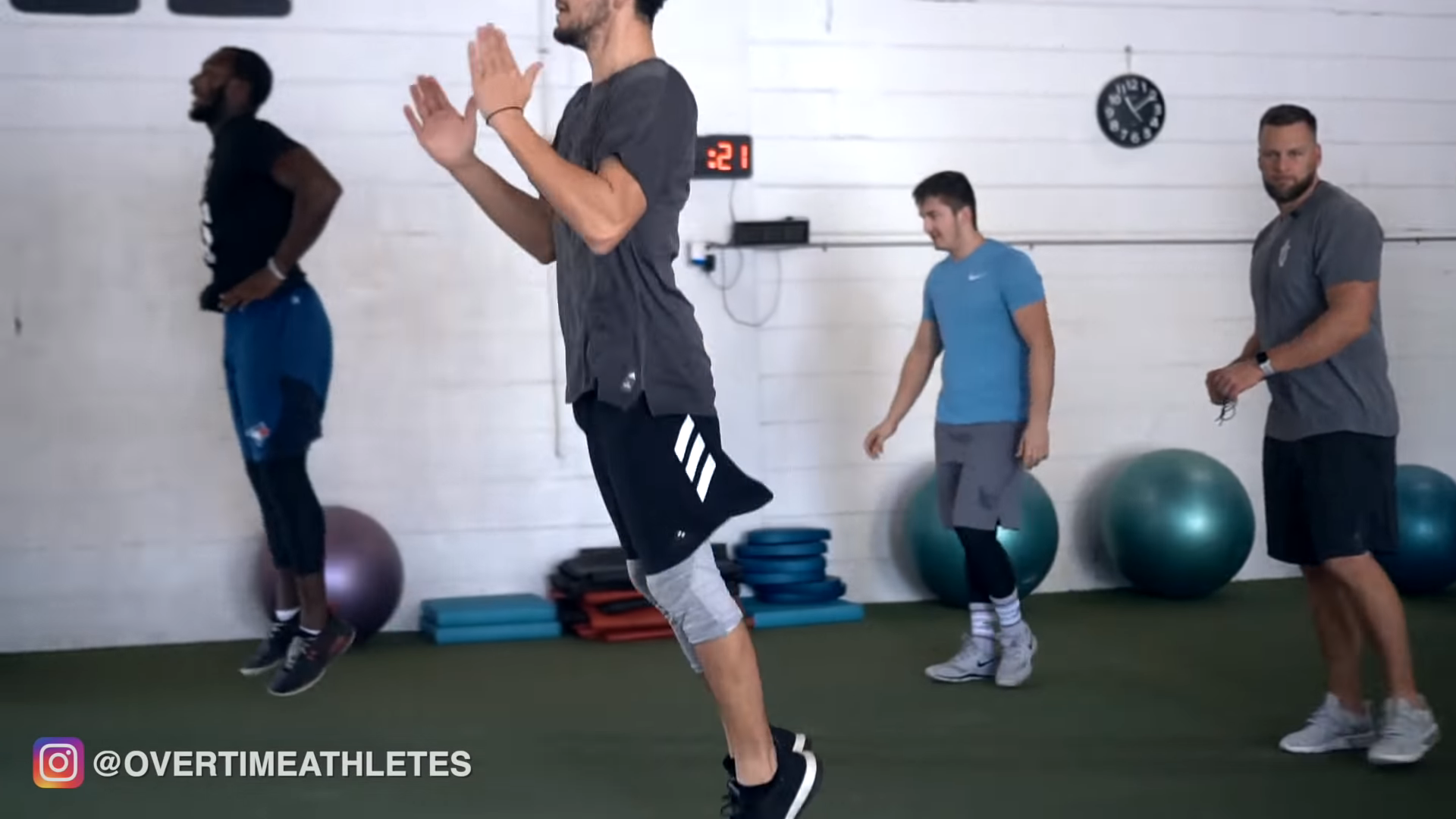
These are lifts, drills, and plyometrics that help build a strong base to work off of.
Some of them I like to use are pogo jumps, continuous lunge jumps, squat jumps, low handle trap bar deadlifts, and of course a slew of corrective exercises that help vertical jump athletes.
If an athlete skips this training, he may have a deficiency that was not addressed. This could cause his progress to slow, or even cause him to plateau.
Vertical Jump Training Mistake #5: Building the Wrong Kind of Strength
I see a lot of guys trying to build powerlifter strength to jump higher.
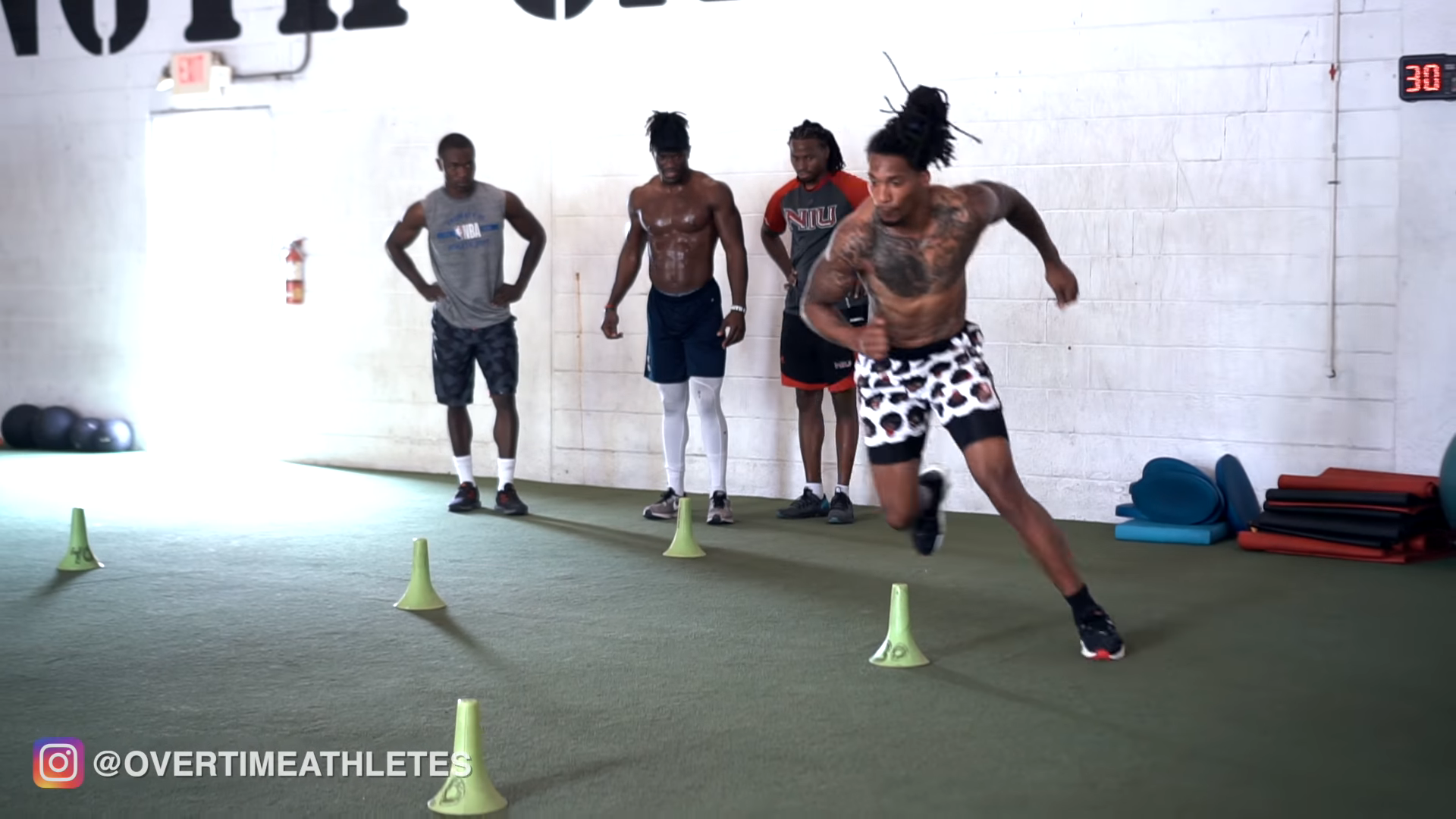
They’re worried about the weight on the bar, not how fast they’re moving it, or what it’s doing to their body.
This results in increases in strength… But not power.
Lifting heavy weights slowly is not conducive to the vertical jump. In fact, it can hurt it more than it can help it.
Instead, you should build elastic strength that translates to the vertical jump AND overall power.
Elastic strength can be built with tempos.
This is something I’ve talked about for YEARS, and I’ll share some resources on how to build that below.
The Most Effective Jump Training Online
You probably saw above that I developed a 44-inch standing vertical jump a few years ago.
It took repeated testing, experimenting, and failures to finally arrive at a method that gave me staggering results. To be more precise, a 12 inch increase in my vertical jump.
A few years back, I shared that easily repeatable method for a higher vertical jump in The Flight System.

People loved it.
Some loved it so much that they stole it and sold it as their own.
But, just like the that telephone game we played in elementary school where the message is distorted by the end… The coaches who lifted my methods didn’t get it all the way right.
The original still stands strong.
And you can grab a copy and take it for a test ride by heading over to the link below:
===>Click Here to See How I Increased My Vertical 12 Inches
-
 Foundational Plyometrics for an Explosive Base March 24, 2020
Foundational Plyometrics for an Explosive Base March 24, 2020 -
 The Best Exercises for Force Absorption Training January 16, 2020
The Best Exercises for Force Absorption Training January 16, 2020 -

-
 3 Best Plyometrics for Basketball Training December 11, 2019
3 Best Plyometrics for Basketball Training December 11, 2019 -
 How to Progress Your Vertical Jump Training November 4, 2019
How to Progress Your Vertical Jump Training November 4, 2019

